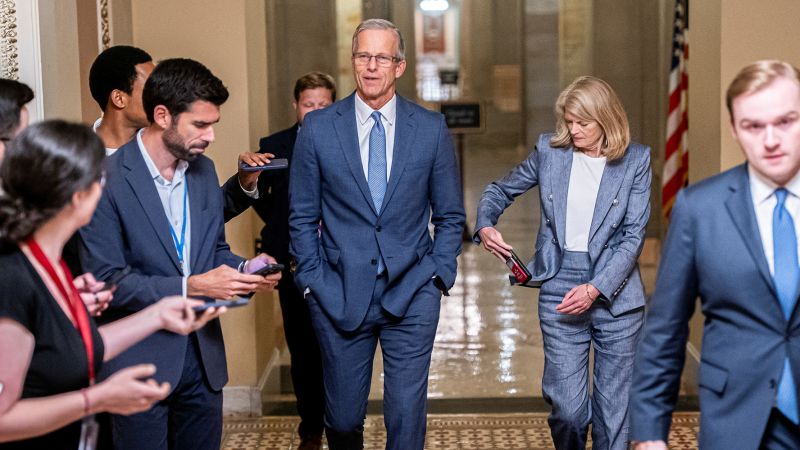Senate Republicans have achieved a narrow victory in passing President Donald Trump’s extensive tax and spending cuts package. This decision came after lengthy negotiations aimed at securing the votes of key holdouts within the party. While this stage represents a significant step for the Trump administration, challenges remain as the focus shifts to the House of Representatives, which is currently deeply divided along partisan lines.
With the Senate set to reconvene soon, many Republican leaders anticipate that President Trump will need to exert considerable pressure on House GOP members to rally behind his legislative agenda. The tumultuous weeks preceding the Senate’s vote were characterized by intense negotiations, highlighted by struggles to gain the support of pivotal Senate Republicans, including Senators Susan Collins from Maine, Thom Tillis of North Carolina, and Rand Paul of Kentucky. These individuals remained hesitant, even amid last-minute modifications to the proposed legislation.
To break the legislative impasse, Vice President JD Vance ultimately stepped into the fray, casting the crucial tie-breaking vote that allowed the bill to advance. Senators John Thune, as the Majority Leader, along with House Speaker Mike Johnson, have been tirelessly working to ensure Trump can sign his first notable legislative victory—ideally on July 4th.
The multitrillion-dollar bill encompasses sweeping tax cuts and seeks to augment funding for national security initiatives. Such increases in spending, however, have raised concerns due to the accompanying cuts to the federal social safety net, marking the most significant reduction in decades. This ambitious fiscal plan culminated after an exhaustive 24-hour period of negotiations, leading to the bill’s final vote in the Senate.
Throughout the lead-up to the vote, the potential for failure loomed large. Thune maintained a cautiously optimistic outlook amidst uncertainty, displaying a pragmatic approach to discussions with reporters. Fellow Senator Lindsey Graham humorously expressed his belief that pessimism had taken hold several times before the vote, indicating a palpable sense of tension and unpredictability surrounding the outcome.
As the clock ticked closer to the Senate vote, the Republican caucus experienced a notable surge in activity, prompted by critical negotiations targeting GOP holdouts. For instance, Sen. Lisa Murkowski from Alaska had remained a vital player in discussions, with various policy incentives being presented to gain her support. Ultimately, a key concession was reached on a food stamps-related provision that satisfied Murkowski’s criteria, ensuring compliance with Senate parliamentary rules.
The GOP leaders made several last-minute adjustments to the bill in an effort to garner additional votes. The latest iteration of the package effectively doubled the funding for rural hospitals to $50 billion, a demand championed by centrists who had deemed the original funding insufficient. Concurrently, provisions related to Medicaid were significantly revised, including the removal of punitive measures against states expanding Medicaid coverage for undocumented immigrants.
Additionally, the revised legislation eliminated previous bans on gender-affirming care within Medicaid and the Children’s Health Insurance Program, which marks another critical shift aimed at accommodating diverse constituents within the party. While these modifications were made, the House’s version of the bill diverged on key issues, indicating a complex negotiation process ahead.
The narrative surrounding this tax and spending overhaul continues to evolve, and House Republicans are reportedly uneasy about the Senate’s version. With the potential for considerable opposition to arise, House GOP leaders have indicated that there had been suggestions to adopt the original House version of the bill instead of the extensive amendments seen in the Senate’s draft.
The House leadership, which is preparing for a pivotal vote imminently, has expressed confidence in garnering enough support, although it is expected that this will require extensive mobilization efforts and the involvement of Trump himself. Despite the challenges ahead, such as the possibility of dissent within their ranks, the House GOP seems determined to push forward with the legislative agenda.
As developments emerge, this bill’s trajectory elucidates the intricate dynamics within the GOP, showcasing how internal party disagreements and shifting policies can profoundly affect the legislative process. Legislative experts and analysts will undoubtedly continue to monitor the situation as both chambers grapple with the realities of governing, balancing the diverse interests of their party members while striving to achieve significant policy outcomes.











